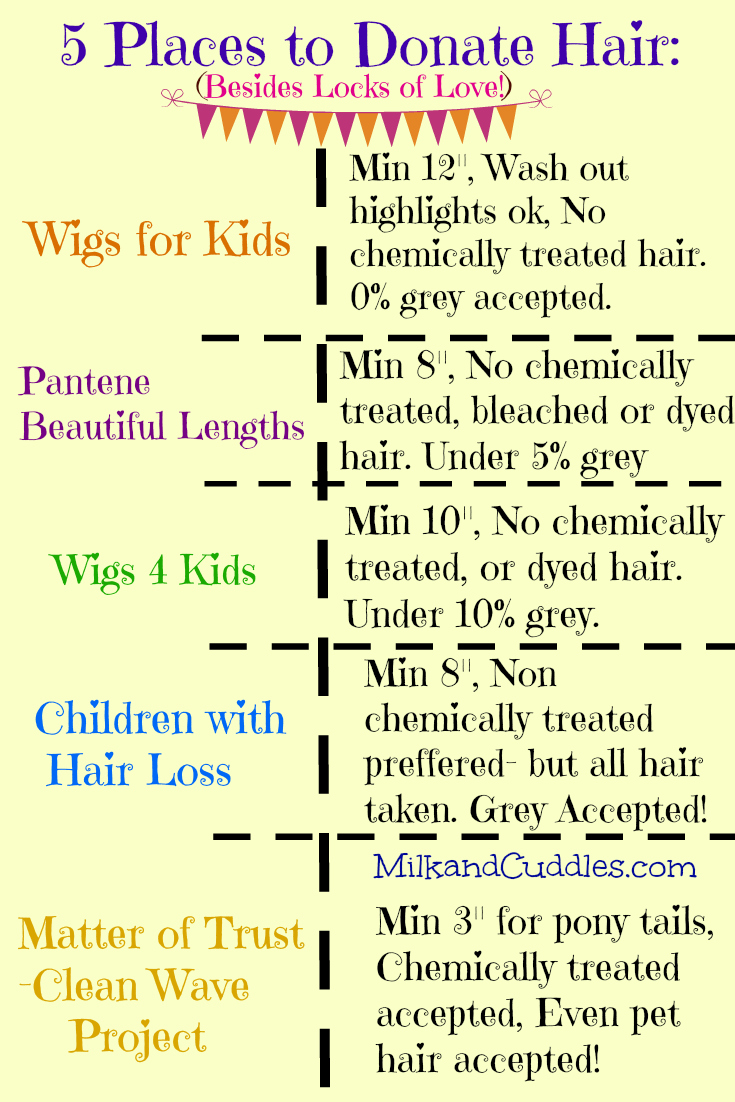

Places to donate hair professional#
Although you can do the big chop yourself, I prefer to leave this to professional hairstylists so they can shape my hair properly after the donation amount comes off.
Places to donate hair free#
It’s free to donate your hair, but since wigs are so expensive to make, most organizations will accept monetary donations with or instead of hair. The waiting paid off, though – in January 2023 I donated 12 inches to Children With Hair Loss! My goal for my fourth hair donation is at least 14 inches. They stopped taking donations in 2018, and between my wedding ( which got postponed and shifted multiple times due to the COVID-19 pandemic) and being a bridesmaid in multiple friends’ weddings, I also took a pause on donating.

I finally was able to donate 10 inches of hair to Pantene Beautiful Lengths in 2017, and another eight inches in 2018. I wanted to make sure that I was donating to a reputable place that would not charge recipients for their wigs. I did a lot of research on organizations the first time I was ready to donate my hair. I’m registered as an organ donor, I’ve donated blood a few times when I’ve been able to, and I need to cut my hair at least once a year anyway, so why not do something worthwhile with that, too? To me, it’s an easy way to help people in need. I don’t think I knew anyone growing up who donated their hair, but I remember hearing about Locks of Love and thinking it would be really cool to do that one day – and now I have! I’ve donated my hair three times to help make wigs for medical patients. It costs a lot of time and money to make a single wig and takes a lot of hair luckily, it’s easier than it seems to donate hair. Today, wigs are made mostly of human hair or synthetic hair. Throughout history, wigs have been made of human hair, but other materials too, like palm leaf fiber and wool. Today, people wear wigs for many reasons – to try a new, temporary hairstyle to protect their natural hair from damage or to combat hair loss from alopecia, burns, chemotherapy for cancer, or other health conditions. Many married Orthodox Jewish women have been wearing wigs since the 1600s. They were also used by aristocratic men in the United Kingdom and Europe in the 16th century. Their earliest uses were to protect the heads of ancient Egyptians from extreme heat, and to help ancient Egyptians, Assyrians, Greeks, Phoenicians, and Romans celebrate important events. Fill out forms for each person who donates, even if they are in the same house, and ship them separately.Wigs have been around for a long time. It makes it easier for organizations to sort donated hair if it is all in individual envelopes.

Some of the ones listed above will accept dyed hair, but not highlighted hair, while others will only accept hair that hasn’t been altered in any way. DON’T assume organizations will take dyed hair.
Places to donate hair how to#
They will know precisely how to part, tie off, and cut your hair to match their organization’s requirements. Just search “hair donation salon near me” to see what pops up.

DO follow the shipping directions exactly.Avoid styling products and make sure the hair is not even a little bit wet before it is shipped, as it molds. DO clean and dry your hair thoroughly.This does not include inches of dead or split ends so make sure you have a nice, clean cut before you start chopping. As you can see, most organizations require at least eight inches of healthy hair to use for wigs. DO trim your ends before starting to cut your hair for donations.


 0 kommentar(er)
0 kommentar(er)
